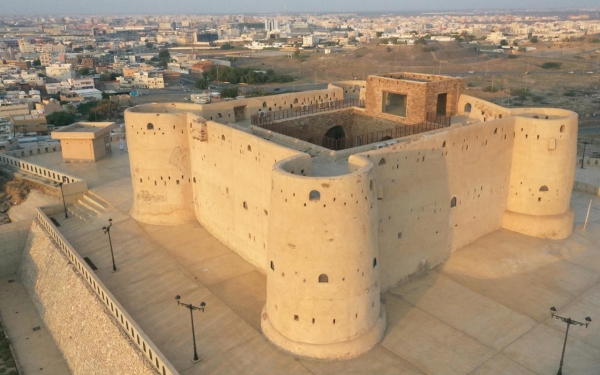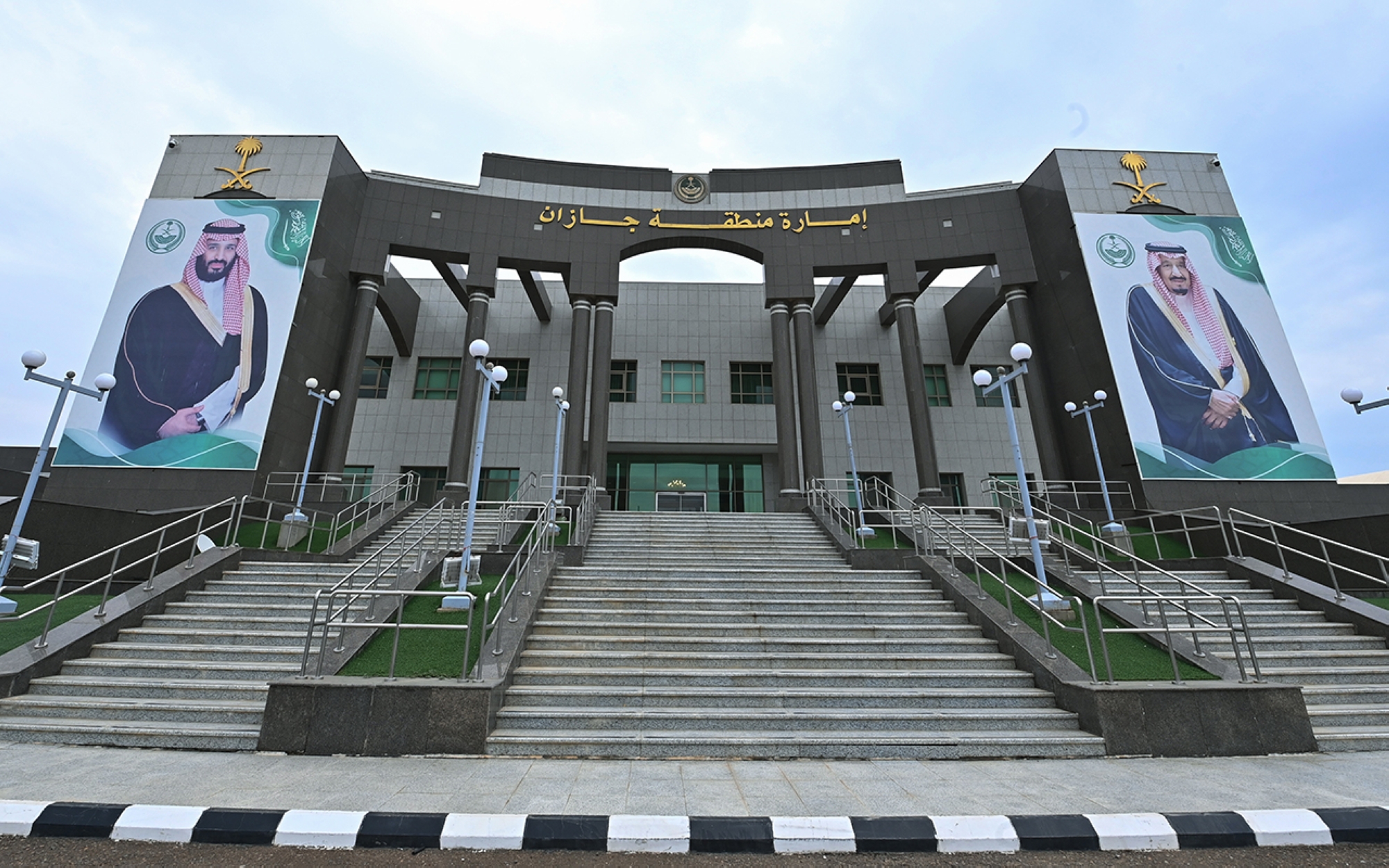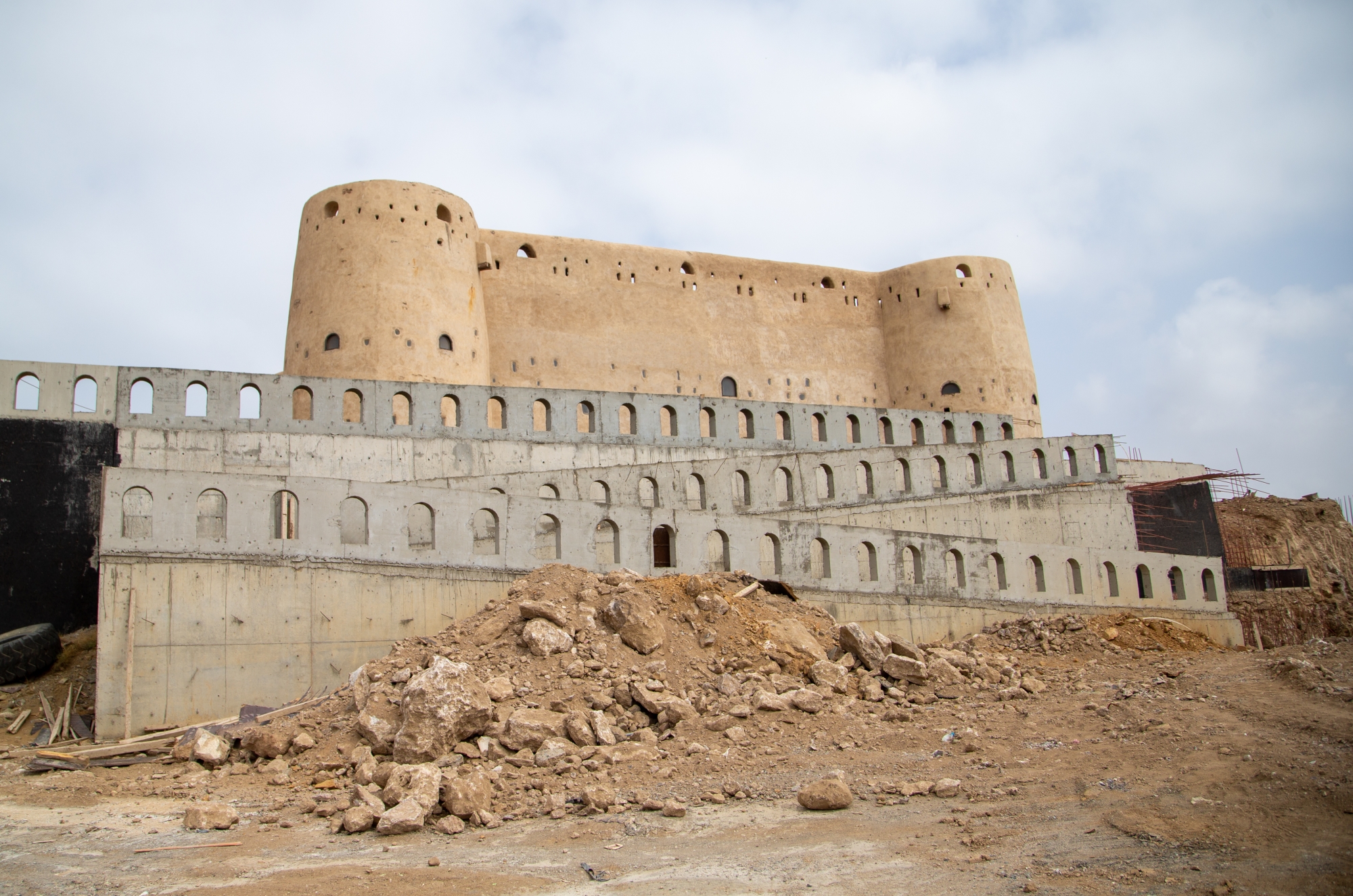





Jazan City (Jāzān), the administrative capital of Jazan Province in the Kingdom of Saudi Arabia, contains a concentration of government and administrative services headquarters. It is the second city in Jazan Province in terms of population after Sabya Governorate. It is home to the Port of Jazan, the Kingdom’s third-largest port on the Red Sea coast in terms of design capacity.
Overview of Jazan City
Designation of Jazan City
The name Jazan typically refers to a known valley stretching from its source to its estuary. In ancient times, this name was unknown, with only a single mention found in a Musnad inscription, as Jzan. This inscription is believed to mark the first historical reference to the name Jazan. Prior to the advent of Islam and until the tenth century, the region was divided into two distinct territories: Mikhlaf of Hakam in the south and Mikhlaf of Athar in the north. It was later Suleiman Bin Taraf al-Hakami who united these two Mikhlafs, resulting in the region being named Mikhlaf al-Sulaymani in his honor. This designation persisted in historical records focused on the region. After the rule of the Idrisids in the region, the name Jazan became associated with the coastal city of Jazan. Originally established as a port for the region, it subsequently expanded and prospered to become a substantial city in the modern era.
Location and surface area
Jazan City is located west of the province on the Red Sea coast, bordered from the north by Sabya Governorate, from the south by Ahad al-Masarihah Governorate, from the east by Abu Arish Governorate, and from the west by the Red Sea. The city is a transit station to Farasan Island on the Red Sea, the most important populated island and the largest in terms of area in the Kingdom. Located thirty-eight km from Jazan City, it is the main connection point in the province.
Climate of Jazan City
The climate of Jazan City is impacted by tropical winds. A predominantly coastal climate prevails due to the fact that the city is located in the province’s coastal strip. The weather is mild in winter and hot and humid in summer. Temperatures rise from June to September, averaging 25 degrees Celsius in January and 35°C in June. Relative humidity is also high in Jazan since the city is situated on the seacoast in the western part of the province, averaging 61 percent in July to 79 percent in December, with a maximum of 99 percent and a minimum of 27 percent.
Jazan is also affected by northwestern winds from May to September, while seasonal winds blow in June and August, laden with sandstorms, thus the phenomenon of dust. The mountain highlands east of the city of Jazan City often see heavy rainfall in the summer during July, August, and September, causing violent flash floods as water gathers in the highlands and steeply rushes downhill towards the coast. The province's main valley paths run from east to west towards the Red Sea coast.
Demographics of Jazan City
The population of Jazan City has steadily increased over the years. In 1992, the city's population was approximately 56,000. In 2004, the population exceeded one hundred thousand and reached 127,000 in 2010. Between 2010 and 2014, the population grew to 178,000, then recorded about 200,911, according to the 2022 Saudi Census. Jazan City is Jazan Province’s second-most populous city after Sabya Governorate, with about 14.3 percent of the province’s population concentrated there.

Agricultural wealth in Jazan City
Jazan City has extensive agricultural areas and is one of the Kingdom's most agriculturally productive cities. Local markets provide many different food crops and also manifest a social dimension due to agriculture's association with locals’ lives as a prominent economic activity and a time-honored folk tradition. In addition, basic resources for agriculture abound, along with fertile soil, a suitable climate for planting hundreds of species of trees, renewable fresh groundwater, and year-round rainfall and outpourings.
Historical legacy of Jazan City
Jazan City in ancient times
Jazan City dates back to the Stone Age, as confirmed by archaeological studies and research carried out in the region, which showed that the first human settlement was during the Lower Paleolithic. Tools belonging to the age of the Acheulean civilization have been found, and surveys have shown that the Red Sea coast region is one of the best sources of information on the Acheulean stage. Due to the proliferation of hunting tools found by excavations, researchers inferred that the inhabitants of the Acheulean settlements relied for their survival on seafood, such as fish and shellfish, given their availability and nutritional value.
In light of its important strategic position situated on ancient trade routes between Yemen and Hejaz, on the one hand, and between the Levant and beyond, on the other, Jazan Province maintained cultural links with the ancient kingdoms that thrived in that period in the south of the Arabian Peninsula. Human settlement in Jazan was contemporaneous with those kingdoms, such as the Minaean Kingdom, Kingdom of Sheba, Kingdom of Qataban, Kingdom of Hadramawt, and the Himyarite Kingdom. However, Jazan was not politically subordinate to any of them; in fact, archaeological evidence suggests that the inhabitants of the region were not in agreement with those neighboring kingdoms and governed according to their own interests.
Jazan City in the age of Islam
Since the emergence of Islam and its spread in the Arabian Peninsula, Jazan Province has been an Islamic Arab territory since the early Islamic age. A delegation from the region journeyed to the Prophet Mohammed (PBUH) in al-Madinah al-Munawwarah in the tenth year of his migration, headed by the chieftain of al-Hakam tribe, Abduljad Bin Rabia al-Hakami, and declared embracing Islam. After the spread of Islam in the south of the Arabian Peninsula, Prophet Mohammed (PBUH) appointed provincial governors in these multiple territories, including the province of Tihama, with which Jazan was affiliated.
Jazan City in the Saudi era
After the founding King Abdulaziz Bin Abdulrahman Al Saud reclaimed the rule of Riyadh and established the Kingdom, the King led unification campaigns throughout the Arabian Peninsula. At the time, the region of Jazan and Tihamat-Aseer southwest of the Arabian Peninsula was subject to a local chiefdom ruled by one of its dynasties, the Idrisids. The Treaty of Makkah was concluded between the founding king and the region’s ruler, al-Hassan al-Idrisi, on October 21, 1926. Under the treaty, the territory came under the mandate of King Abdulaziz and was so for four years, until the treaty was annulled by the Idrisid rulers. Consequently, the founding King sent his troops to recapture the territory, and al-Hassan al-Idrisi ceded his rule in 1930; thus, Jazan was the last region of the Arabian Peninsula to join Saudi rule.

Urban heritage in Jazan City
Al-Dosariyah Castle
Jazan contains historical relics belonging to different periods, including archaeological monuments that are now considered tourist attractions, such as al-Dosariyah Castle, located on a mountaintop in the center of Jazan City. Built as a square with a total area of about nine hundred m, it consists of two stories and four cylindrical towers resting on huge foundations. The towers and walls are punctuated with apertures for military purposes and southern and western barricades that served as initial defensive lines for the edifice, soaring about 250 m above sea level. The citadel was used as a military fortress during several historical periods. In 1932, King Abdulaziz ordered its restoration to become the headquarters of the Saudi army, and restoration works were concluded in early 1933. The first Saudi military garrison to arrive in the region settled in the castle.

Jazan Heritage Village
Jazan City includes the Jazan Heritage Village, which is more like a live exhibition of Jazan's cultural heritage and long history. It provides a vista of a period of the region’s history, showcasing the prevalent lifestyle of the time, from Tuhami, mountainside, and Farasani houses to the tools used by locals, such as the Maifa, Jibna, and mud cups. In bygone times, human beings adapted to their surrounding environment, repurposed natural resources, and transformed them into houses, utensils, and furniture. The upshot of this was a civilization that makes modern man proud, as the village attracts Saudi artisans and producers to practice their crafts. It is also the fairground for many of the region’s cultural and heritage events and art exhibitions.
Government establishments in Jazan City
Emirate of Jazan Province
It is one of the thirteen emirates of provinces in the Kingdom, representing the Custodian of the Two Holy Mosques in the Jazan Province. Organizationally, the emirate is under the Ministry of Interior, and its responsibilities include coordination and participation with government entities in planning stages to provide all services to citizens and residents, in addition to receiving their complaints, following up on their affairs, and working to meet their demands and solve their problems. The emirate operates from its headquarters in Jazan City on the Corniche Road, approximately six km from King Abdullah International Airport, and takes the Ministry of Interior's visual identity as its logo.
Jazan Province Municipality
It is one of the seventeen municipalities distributed across the Kingdom's thirteen provinces focused on the urban development of Jazan Province, coordination with government agencies to prepare structural plans for cities, governorates, and local centers in the province, and the provision of municipal services to citizens and residents. Organizationally, Jazan Province Municipality is under the Ministry of Municipalities and Housing. It is headquartered in Jazan City, about one km from the headquarters of the emirate of the province, and oversees twenty-five municipalities, including Sabya, Abu Arish, Samtah, Fayfa, at-Tuwal, Baish, Farasan, and Damad.
The establishment of the Jazan Province Municipality dates back to 1932, the year when the founding King Abdulaziz Bin Abdulrahman Al Saud announced the unification of the Kingdom. The municipality was originally called the Markets and Levying Oversight Service and is one of the oldest regional municipalities in the Kingdom. Sheikh Issa Fatehuddin Aqili was the first to serve as mayor of Jazan, after whom the municipality witnessed successive developments. He was succeeded by about sixteen mayors and secretaries until 2023.

Education in Jazan City
Jazan University
Jazan University was established by Royal Decree on June 7, 2005. At its onset, the university only had five faculties: medicine, engineering, computer science, information systems, and sociology, forming the nucleus of the university. Later on, the university added the Faculty of Teachers in 1981; the Faculties of Education for Girls were established in 1992, located within the province; and from then on, faculties were established and added in succession to reach twenty-three by the end of 2014. In addition, four rectorates, nine deanships, and eight institutes, centers, and supporting units have also been introduced.
A large area spanning nine thousand m on the Red Sea coast north of Jazan city was allocated for the University City. King Abdullah Bin Abdulaziz Al Saud laid the cornerstone for the University City on November 15, 2006. A number of projects have been completed, others are nearing completion, and many more are still underway.
Transportation and logistics services in Jazan City
King Abdullah International Airport
Referred to as GIZ for short, King Abdullah International Airport is one of the international airports in the Kingdom, located three km from downtown Jazan City. Founded in 1978, it is the only airport serving the province. King Abdullah Bin Abdulaziz Airport used to be a regional airport in the Kingdom before becoming an international airport to upgrade the Kingdom's domestic airports and facilitate inter-province travel. In 2018, the first stages of the new airport construction project were launched at al-Sabkha, thirty km north of the center of Jazan City, in order to raise the airport’s capacity. The new airport is one of the important drivers powering economic and tourism development in Jazan Province. It has a capacity of 6.3 million passengers per year, consists of thirty-nine buildings, and supports future expansions. The current airport's capacity is nine hundred thousand passengers per year.
The new airport has five departure gates, each containing two passenger boarding bridges, totaling ten boarding bridges for passenger traffic from aircraft to the airport. The airport includes multiple facilities: a passenger lounge, the Royal Lounge; service buildings; car parks; service and investment facilities; a cooling station; a wastewater treatment plant; a water tank; and a power building. The airport is also equipped with state-of-the-art operating and service systems to ensure the highest levels of comfort and security for passengers and provides all necessary infrastructure facilities.

Port of Jazan
The Port of Jazan is the Kingdom's third seaport in terms of design capacity on the Red Sea coast and the Kingdom's largest port for importing cattle from the Horn of Africa. It is situated about 266 mi from the Bab al-Mandab Strait and was inaugurated in 1976. Over the course of its history, the port witnessed three stages of development, including the construction of quays, two breakwaters, a control tower, a power station, storage warehouses, fuel stations, water desalination and pumping stations, and administrative and residential facilities. The port occupies a strategic location, situated close to eastern and western maritime trade routes between Europe, the Far East, the Arabian Gulf, and East Africa. The Port of Jazan has twelve berths and three approach channels, equipped with navigational assistance to ensure the safety of ships, as well as a lounge for passengers traveling from the ports of Jazan and Farasan.
Tourism potential in Jazan City
Diversity and natural wealth
Jazan City hosts a variety of tourist attractions, including the North Corniche Park, a quality-of-life landmark given its array of services spread across one million m2—one of the Kingdom's largest waterfronts. The park includes recreational areas, footpaths, a promenade, green areas, cafes, sports courts, artistic aesthetics, and the 450-m-long Cultural Street. It contains pathways for creative and talented people, visitor sessions, aesthetic themes, and venues for events that promote cultural values and cater to younger age groups, as well as the Middle and South Corniche Waterfronts of Jazan City, which are attractive recreational sites for locals and visitors.
Tourism seasons and festivals
Tourism events and activities are held annually in Jazan City, such as the Jazan Winter Festival, which features a multitude of folk shows and heritage paintings that highlight the province’s heritage, legacy, art, and fashion, as well as local craftsmanship and handicrafts in the areas of agriculture, fishing, diving, pearl trading, and the tools used in these crafts. A broad host of folklore troupes and traditional performers participate in the festival. This is in addition to the Mango Festival, where locally cultivated mango cultivars are showcased, most notably: Tommy, Glenn, Zebda, Besennara, Kent, Keitt, Palmer, Pakistani, Special Indian, Fazli, Van Dyke, and Sudanese. The province’s most prominent governorates known for mango cultivation are Baish, Sabya, and Abu Arish.
Another event is the Jasmine and Aromatic Plants Festival; a regional tourist festival to draw attention to jasmine, its characteristics, and its association with the Jazan Province’s heritage. The festival also aims to develop and promote tourism programs, adopt jasmine as a hallmark of regional identity, diversify festivals held in the province, and provide concrete opportunities for jasmine cultivators, investors, and enthusiasts.
Related quizzes
Related articles


